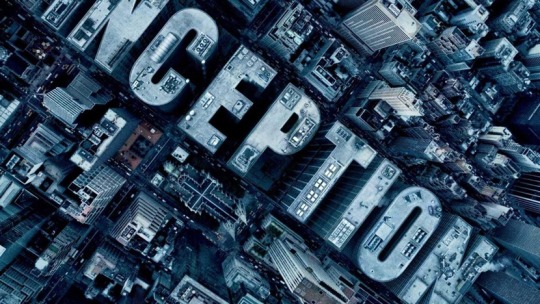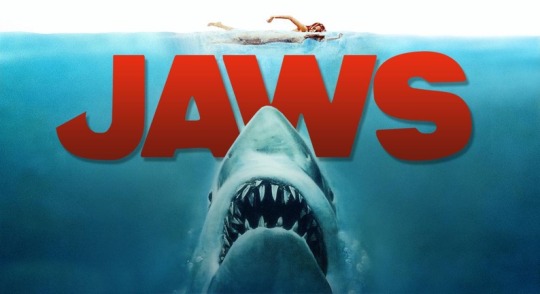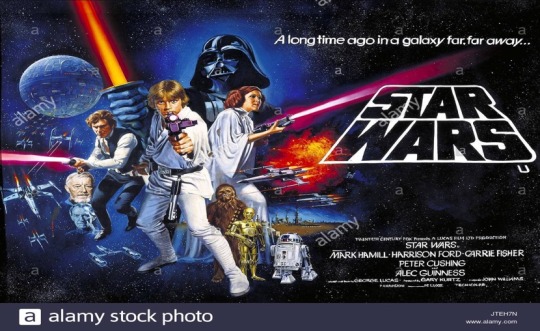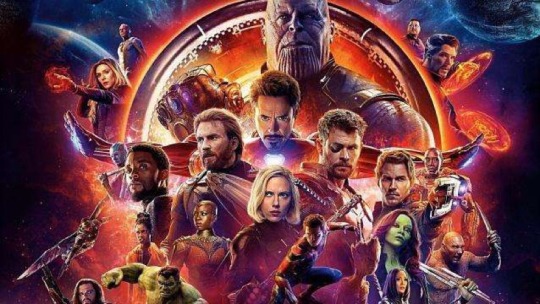jiezaihencool-blog
1 post
Digital Screening Has Expanded What is Possible
Don't wanna be here? Send us removal request.
Text
Digital Screening Has Expanded What is Possible
Movies in the simplest sense referred to the technology which quickly reproduced successive frames, producing a so-called "motion illusion". Julie (2016) stated that since its birth more than a century ago, film itself had undergone a transition from silent to sounds, from black and white to colour, from film to digital filmmaking, essentially allowing people to perceive reality by watching moving visual images. Given the industries’ close connection to technology, films had undergone major changes since the advent of digital technology. It was obvious that most movies today, no matter how “traditional” they seemed, involved digital technology, with digitalization being applied from pre-production to post-production to screening. Movies were no longer based solely on photographic film, along with their distribution being revolutionised as well. Instead, they were packaged in digital files and delivered to the audience anytime and anywhere: at home, at school, at companies, on buses, even on airplanes, and through handheld devices, headsets, TV plasma screens, tapes, DVDs and Blu-rays, with dozens of Internet formats (Cubitt 2010). The 35mm photographic films, the namesake of this media, were now less common in filmmaking, had disappeared in post-production after the arrival of digital films, and would even be removed entirely from the release project (Julie 2006). In view of this, scholars were struggling to identify movies today, with Manovich (1995) even proposing that cinema’s core identity had changed since it was possible to create entire photorealistic scenes by computers (Cubitt 2010).
1.Film digitization and digital cinema
The meaning of digitalization denoted converting everything that exists in other analogue forms into digital information and using computer to deal with digital information. Digitalization presented an opportunity to change the film production (Ohanian & Natalie 2000). In the past, information was in the form of simulation and must be converted into digital information. This transformation process was called a digitization. The core of the film digitization was to convert the video recorded by the film as a carrier into a digital record for the effect of the carrier record and convert it into a digital signal for processing at the computer. It can be seen that computers play a pivotal role in the process of digitalization of movies. It can be said that computers are the basic premise of digitalization of movies. This is not an exaggeration, because computer technology is fully involved in the process of digital filming, including pre-production, actual shooting and even post-production (Ohanian & Natalie 2000). For example, in the pre-production, the scenes of the film, the plot of the story, the simulation and rehearsal of the screen all need the help of the computer system to find the most suitable narrative structure and the most impactful solution; in the actual shooting, there are some Shooting that cannot be done in the traditional way can also be done by computer technology; for example, in the post-production, the computer processes the image and sound, and combines the captured movie material with the computer image.


2.The influence of film digitization on film ontology
2.1. Re-exploration of the nature of film
The introduction of digital technology had impacted the "real" nature of traditional movies, thus greatly expanding the meaning of the cinema. Traditional movies captured a picture frame and recorded it, with its essence based on the redemption of material reality within a camera (Kracauer 1997), as a proof of existence. Special effects then, largely constrained by physical limitations, were simply applied directly on the original film. Jump to today and digital technology could use computer-generated imagery (CGI) to achieve pre-simulation and picture production without physical shooting. As a result, movies were no longer just slavish recordings of reality, but created entirely new realities, otherwise called virtual reality (VR), which Julie (2016) termed “neo-creationism” in her book The Ontology of Film. These advancements brought about great visual effects, such as the intricate dreams in Inception (2010), or Jack’s travels between the real world and the dreamy planet in Avatar (2009), or the believable interactions between real actors and the digital-made tiger in Life of Pi (2012). The images created by these computers demonstrated that films could be not just simple copies of the physical reality, but also “visual lies” challenging the traditional concepts of reality itself.


2.2 Enrich the film genres
This revolution had directly led to the emergence of many new film types, reorganizing the global mainstream film consumption. The most representative genre was disaster movies, since traditional photographic imaging methods, such as modelling, made it impossible to film at ground zero and limited the development of such films. Filmmakers today instead relied on digital technology, realistically reproducing disaster scenarios in safety or through other simulation methods. The Spielberg’s Jaws (1975) was considered to be the break in the disaster genre, with some considering said film and Star Wars (1977) to be the forerunners of their respective genres. Particularly, deployment of computer-controlled camera motion in Jaws (1975) made it difficult to distinguish the hydraulic fake shark model and the real thing. After its success, various disaster scenes, even outside the genre, had become the highlights of such films, with disaster films securing its place in the mainstream.


2.3 Influence on the Narrative Structure of the Film
Throughout its long years in producing movies, Hollywood had perfected a certain type of film narrative. Such narratives had always contained a continuous chain of causal relationships, with all elements in the film being subordinate to its narrative, editing, scene scheduling, lighting, camera movement and performance joints. This method, known as the classic Hollywood narrative, produced a transparent style that allowed viewers to only pay attention to the story told by the film without paying attention to the way it was narrated (Allen & Gomery 1985). However, with the introduction of digital technology such film principles had changed dramatically: mainly that the story and its clear narrative ebbed away from the centre stage, and instead being replaced by vivid pictures and shocking sound. Most evident was the superhero genre. From Captain America and Iron Man, to Thor and even the Avengers series, these films are all telling the same story – one that involved superheroes defeating evil forces and saving the world. It was especially worth noting that given many film critics’ belief that superhero movies were lacking in depth and story plots, the absolute dominance of those movies in the current global film market was of particular interest. This phenomenon could be attributed to the proliferation of digital technology, since the story itself was never meant to be the highlight of such movies. Rather, the shocking special effects, the immersive audition and the arousing fight scenes were their selling points. It could be said that movies such as superhero films were the direct result of digital technology development and one of the biggest beneficiaries. It could also be identified as the most representative example of the transformation of the Hollywood film narrative structure. According to statistics of the global top ten box office rankings, seven movies were superhero films, with Avengers: Endgame (2019) of the Marvel pulling in first. Interestingly, two other films, Avatar (2009) and Jurassic World (2015), were also successful for their special effects by utilising superb technology alongside an amazing combination of audition. In this respect, it could even be considered as a superhero film as well.

3.The impact on the distribution and exhibition of the film
The development of digital technology had greatly influenced the film screening media. As one of the most important means of film distribution, the screen was one of the main media for digital film exhibition, guaranteeing viewers to experience the digital cinema. The two main projection formats were Digital Light Projection (DLP) and Silicon-based Liquid Crystal Display (LCOS), which were geometrically identical to the main formats of fixed screens, liquid crystal displays (LCDs) and plasma screens - using light-emitting diodes (LEDs). Therefore, today, projecting devices were represented by large-screen high-quality plasmas and liquid crystal screens occupying the mainstream. The audience did not have to go to the cinema to see the movies, as it could be distributed more easily, with the range of media for displaying the movie was greatly expanded.
There is no doubt that digital technology expanded what was possible, changing and enriching the production practice of the film industry. However, these practices still fell under the overarching cinema methodology with revolutions in sound, colour, digital. In the end, technology after technology, at its core, cinema remains cinema.
Reference List
Allen, R. C., & Gomery, D. (1985). Film history: Theory and practice (p. 108-109). New York: McGraw-Hill. New York: Knopf
Cubitt, S. (2000). Making Space. Retrieved from http://www.sensesofcinema.com/2010/feature-articles/making-space/
Julie. N. (2016). What Is Film?. Bern, Switzerland: Peter Lang US. Retrieved Sep 10, 2019, from https://www-peterlang-com.ezp.lib.unimelb.edu.au/view/title
Kiwitt, P. (2012). What Is Cinema in a Digital Age?: Divergent Definitions from a Production Perspective. UNIVERSITY FILM AND VIDEO ASSOCIATION, 64(4), 3-22.
Kracauer, S. (1997). Theory of film: The redemption of physical reality. Princeton University Press.
Manovich, L. (1995). “What Is Digital Cinema?” Retrieved from
http://gunkelweb.com/coms465/texts/digital_cinema.pdf
Ohanian, T., & Phillips, N. (2000). Digital filmmaking: The changing art and craft of making motion pictures. Introduction to Digital Filmmaking (p. 18-42). U.S: Taylor & Francis Group.
Wasser, F. (2015). Spielberg’s Jaws and the Disaster Film. Cinergie, 4(7), 45-54. doi: 10.6092/issn.2280-9481/6971
1 note
·
View note